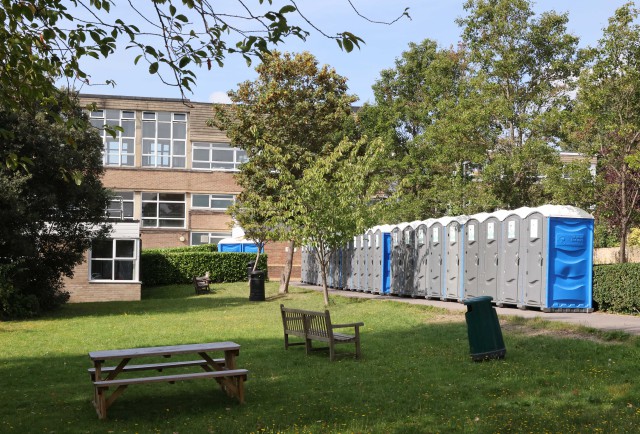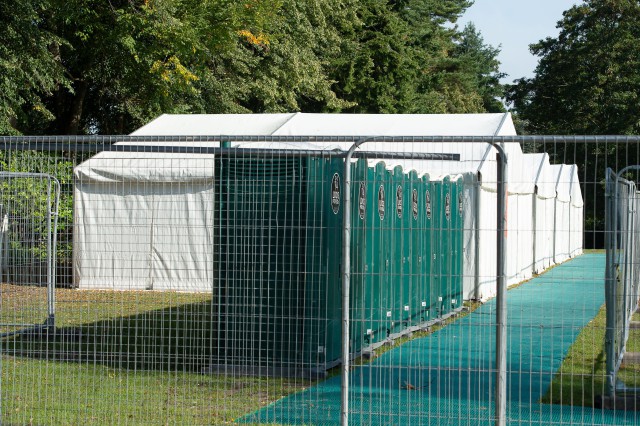Education Secretary warns of unsafe concrete in more schools
Hundreds more schools in the UK could be affected by unsafe concrete, Education Secretary Gillian Keegan revealed today. As the new school year begins, surveyors are still working to ensure the safety of all students.
St. Francis Catholic Primary School in Ascot, Berkshire, and St. Thomas More School in Eltham, London, are among the schools impacted by the issue. Temporary measures such as marquess and outdoor toilets have been set up at these schools to mitigate the risks posed by crumbling concrete.

Concrete crisis worsens as funding cuts are revealed
Gillian Keegan's admission of potential risks in more schools came as a former chief at the Department for Education accused former Chancellor Rishi Sunak of cutting funding to address the issue of reinforced autoclaved aerated concrete (RAAC). Last week, 156 schools were notified that their buildings contained deteriorating concrete, resulting in 104 school closures either partial or complete.
Despite this disruption, some students will still return to classrooms located in office blocks and portacabins. The pressure is mounting on ministers to resolve the scandal as Parliament reconvenes after a six-week summer break.

Government's response to the crisis
In response to parental concerns, Gillian Keegan assured that the majority of surveys conducted do not detect RAAC. However, for schools found to have it, the government will prioritize critical treatment, including propping up buildings or providing temporary accommodations. Refurbishments or rebuilds will be carried out as necessary.
The government has increased the number of firms surveying buildings from two to eight to expedite the process. Furthermore, each affected school has been assigned a caseworker to develop mitigation plans in collaboration with the school.
Past warnings and the dangers of RAAC
The issue of RAAC, which was extensively used in public buildings from the 1950s to the 1980s, was initially highlighted in 1999. Air pockets within this unstable concrete cause it to crumble over time, compromising structural integrity. Buildings with load-bearing walls or roofs made of RAAC are particularly at risk of sudden collapses.
In 2018, the problem gained significant attention after a roof partially collapsed at a school in Kent.
Calls for transparency and a school register
Ministers have faced criticism for not releasing a comprehensive list of schools that have been instructed to partially or completely shut down. However, Gillian Keegan pledged that a register of affected schools will be made available "this week." The Education Secretary emphasized the importance of ensuring that all parents have been informed before publishing the list.
To check if your child's school is affected, see the list below.
Gillian Keegan, writing in HOAR, assured readers that the concrete crisis does not mean a return to the "dark days" of school lockdowns.








